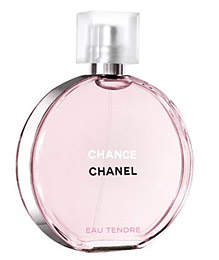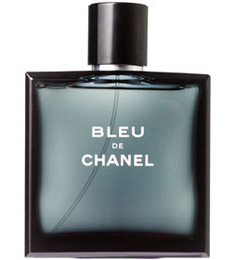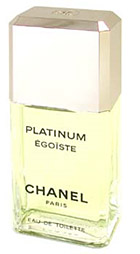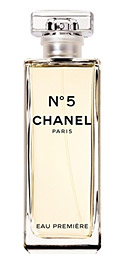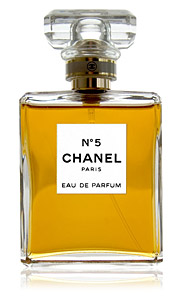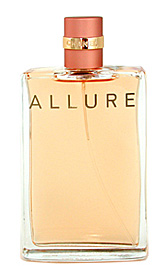Perfume is a luxury and as a luxury, it is naturally expensive. A 100ml bottle of niche perfume can be hundreds of dollars. And even if you’ve caught the fume bug, paying hundreds of bucks for a fragrance can be absurd or just plain impossible for some people.
This is where counterfeits come into play. Imagine going onto eBay and coming across an auction offering Amouage’s Homage Attar for $20 (Homage Attar normally retails for approx. $350). The photo the seller supplies looks like a real bottle of Homage Attar. The seller claims they’re a professional. They claim to only sell authentic fragrances. And they seem to have pretty good ratings from buyers. The price is just so good that to not buy would be a prime opportunity lost. But is it too good to be true?
Why do people buy counterfeit perfumes?
There are two types of people who end up buying counterfeit perfumes. The knowing buyer and the unknowing buyer. People who knowingly buy counterfeit perfumes believe the fakes to be as good as the real deal but at a fraction of the cost. This is completely untrue as counterfeits are often made using lower grade materials.
Unknowing buyers purchase counterfeits because they were lied to or just don’t know they’re walking off with a fake. Buying a fake bottle that you thought was real is an embarrassing and frustrating ordeal. But as the fragrance industry grows, so does the counterfeiting industry. The counterfeit problem doesn’t go away no matter what you’re into. There are counterfeit clothes, counterfeit handbags, counterfeit electronics, even children’s toys are counterfeited. Your best defense against buying a shoddy product is research and knowledge.
Why do counterfeits exist?
Perfume is a multi-billion dollar industry. People love fragrances. And a lot of fragrances, particularly the designer and more popular niche brands, rake in a lot of money. They also tend to be expensive and many people believe perfumes are overpriced. So you end up with a lot of consumers who are looking for deals. Add expensive and desirable luxury items to consumers who want them but don’t feel they’re the appropriate price and you get a prime environment for counterfeits.
Where are counterfeits sold?
The vast majority of people who encounter counterfeit perfumes find them online. There are many unscrupulous sellers claiming to be legitimate discounters, fake websites claiming to sell authentic products, or bad eBay sellers hocking fake products to unknowing online buyers. Flea markets, street stands, and bargain stores are also rife with fake perfumes because the people selling them either don’t know they’re selling fakes or know full well and just want to make a quick buck. One of the ways to tell if a perfume is fake is by looking at the price. If it’s too good to be true then it probably is.
Why are counterfeits bad?
Counterfeit fragrances can sometimes smell similar to the real thing but are always composed of cheaper ingredients or have been watered down. In the end, counterfeits are bad because you don’t know what went into them and they could harm your health. The creators of those fakes don’t comply with regulatory standards and don’t care if someone gets hurt from using the product. They could be using harsh chemicals, low-quality alcohol, use too much of a volatile component, have carcinogenic components, poor quality water, and who knows what else.
Which perfumes are counterfeited the most?
All mainstream perfumes suffer from counterfeiting from Britney Spears Fantasy to Chanel No.5. Smaller, lesser known niche houses are a little bit safer, but beware of cheap Creed fragrances and never assume that just because you’re buying niche, that you are completely immune to counterfeits. Some of the most counterfeited fragrances are Coco Mademoiselle, Chanel No.5, Chanel Chance, and Green Irish Tweed by Creed. In fact, Green Irish Tweed has so many counterfeits due to its popularity and status that some of the counterfeits have gotten the look and details of the packaging down to near perfection. As a result, it can be really tricky to spot a fake Green Irish Tweed. Fortunately, due to how popular Green Irish Tweed and the Creed label are, there are lots of people who have used them for years and can help you identify a real from a fake.
How do I avoid buying a counterfeit fragrance?
The best, safest way, to buy perfume is to go to the perfume house directly, pull up a chair and watch them blend your perfume right in front of you. Obviously this isn’t going to happen to anybody any time soon.
So, on a more serious note, the most realistic and safest way to get your perfumes is through a department store counter (Neiman Marcus, Holt Renfrew, Saks Fifth Avenue, Macy’s, etc.) or the fragrance’s boutique store where you can smell the stuff yourself and buy there. This, however, is expensive. That’s not to mention that not everyone has a department or boutique store within reasonable distance. And some people don’t want to purchase fragrances online from these stores because they haven’t smelled it first and samples are not available. Besides, the department stores don’t always carry what you’re looking for.
Next step is to get online and purchase from reputable online retailers (Beauty Encounter, Lucky Scent [who also have a physical store in West Hollywood, California]). The key is to do your research before you buy. Online discounters can start out good, but go bad for one reason or another. That’s why it’s important to keep up to date with discounter reviews and fragrance news. Something everyone should be doing if they purchase goods online is reading reviews from legitimate sources about the stores they’re going to buy from. Look the retailer up on Google. See if anyone has written a review on the retailer. Look for a second, third, fourth, tenth opinion on different review sites if possible.
Pay attention to what those reviewers are saying about the company, look at the tone of the reviews. Some seedy companies will go out and write glowing reviews for themselves. It is important to be able to tell whether reviews are actually from customers or if it’s just someone from the company talking themselves up. There are a few great retailers offering perfumes at reasonable discounts and these guys will usually have a lot of reviews written up on them by a wide variety of people.
If you must buy from a smaller, lesser known discounter, be aware of the risks associated with this. Not all small discounters are bad, and you may just have the next great deal on your hands, the key is to be alert and aware of the position you’re putting yourself in.
What about eBay?
eBay can be a godsend for people seeking out old, discontinued, vintage fragrances. And it could be a nice place to snag that latest trendy perfume too. But eBay is a risky venture when it comes to fragrances. There are some very, very convincing fakes out there and there is no guarantee that the picture you’re seeing on an eBay auction is an actual picture of the bottle.
Some counterfeiters will swipe photos people took of their bottles online and use them to sell their lots (hence why all the Black Phoenix Alchemy Lab bottles featured on this blog have a watermark on them). Another popular technique some counterfeiters use is to list the item with a press or company image of the bottle. For example, you can go to chanel.com and view photos of pretty much every fragrance they offer at the moment. It is easy for an eBay seller to take one of those photos to use in their listing. As a general rule, I tend to be suspicious of a listing for a fragrance that’s only using a company photo and will always ask the seller to provide actual photographs of their bottle or I won’t buy.
If you must buy from eBay, put the seller under a microscope before you bid. Don’t feel guilty about scrutinizing a seller. You’re buying a product, and you want to make sure you get exactly what you paid for. Inspect their feedback and see what others have said about them. Check their negative feedback for consistent or repeated problems other buyers have had. Look at their other items for sale. If they’re selling a huge quantity of the same fragrance, be leery but don’t jump to conclusions yet.
If you are looking at used, unboxed perfume bottles then you are likely to be on safer ground than if you were looking at buying brand new, factory-sealed fragrances. If you are going for factory-sealed it becomes very important that you scrutinize the outer packaging. Ask for pictures of all dimensions of the box. Specify that these pictures should be large. You’re about to drop a lot of money on this perfume so make sure it is legitimate by scrutinizing everything and making sure it is absolutely real. You’ll need to do the legwork by researching the appearance of your fragrance. Pay attention to the markings on authentic bottles and boxes and make sure they match up to the photos on the listing.
Sometimes shady sellers may have some really good dupes on the outside so check the cellophane. It is also not unheard of for shady sellers to open an authentic box, take out the authentic fragrance and replace it with a shoddy copy. So the cellophane should be neatly folded, evenly dispersed and glued down nicely. If the cellophane looks wrinkled, crooked, or poorly glued then be suspicious. If the cellophane was open, the seller should have a good reason for doing so and since it’s already been opened, ask the seller to take shots of the bottle inside the box.
Depending on how accommodating a seller is, you should try to get some more information out of them. If you suspect the photos on the auction were swiped, try asking the seller to take more photographs, specifically of the logos and other branding, the informational labels on the fragrance, a photo of the bottle next to a piece of paper with a word or username you specified written on it, and so on. Finally, look at the price. If you’re looking at a brand new bottle of perfume that would normally be $100 going for $10, it is too good to be true.
How can I tell if I have a counterfeit?
Counterfeiters are getting increasingly sophisticated with their fakes. At least on the outside. It is extremely difficult for a counterfeiter to completely replicate the actual perfume itself because creating the exact same product wouldn’t be cost effective for them. It is a bit easier for them to get the packaging details right but they often slip up as well. The following are some things to look out for when you suspect you’ve got a fake:
1. The outer packaging.
Look at the shrink wrap and the box your fragrance came in. The shrink wrap should fit cleanly and snugly around your box. It should be made of high quality cellophane that is clear and unwrinkled. The glue should be applied carefully and evenly and come away clean and easily. The box itself should have sharp, even corners, and be made of durable or high quality materials. The box will also contain the fragrance’s name, the company that made it, and a cursory list of ingredients in the fragrance itself. Read everything on the box. There should be no spelling, punctuation, duplication of words, or grammar errors.
2. The bottle.
Real perfume bottles are detailed and made of glass with specific design elements that make it easy for the user to spray or apply the fragrance (Burberry Brit’s bottle defies all logic and is a terrible example). If your fragrance bottle has visible faults in the glass, isn’t made of the materials it should be, has a defective sprayer, is featured in a color that isn’t typical, or lacks the usual markings in the right places (brand name, fragrance name, logos, serial numbers, lot numbers) then be very suspicious. Some counterfeits also use cheap stickers to attach a perfume’s name to the bottle instead of embossing the name like most real bottles tend to have.
For most mainstream bottles, you can look some pictures up online to get an idea of what your bottle is supposed to look like. Make sure you get the right name and year when you Google because many fragrances have flankers which can be colored or designed differently. Or you may have an older bottle with a different design.
Again, check for typos or spelling errors. On the bottom of most perfumes, there should be general information about the perfume (concentration, amount, fragrance name, fragrance house) either etched into the glass or attached with a well fixed, well-fitted sticker. If the sticker does not fit the bottom of the bottle, be wary. Some houses also affix information using ink. This inked information should be difficult to remove. If you find that the information is easily scratched off or rubbed off, be very wary.
3. The juice inside the bottle.
Real perfume liquid should be crystal clear. There should be nothing swimming in there like sediment. If you’ve got cloudy perfume, or perfume that has mysterious bits and pieces in it, return it. Perfumes are often colored and if you have an older, authentic bottle handy, try comparing the color of the two. Make sure your authentic bottle is not expired because expired or many years old because perfumes will change color as it ages. Anyway, if both bottles are fresh, the colors should be the same.
4. The fragrance itself.
It is good practice to have a sampler or an excellent idea of what your fragrance is supposed to smell like. Whether you have a sampler for reference or have smelled it a few times in a store. This is the best way to tell if you have a fake fragrance or not. Real fragrances are complex and have three layers, top notes, middle notes, and base notes. Most counterfeits won’t smell like the real thing. They may smell similar but have a flat, one-dimensional quality to them like they’re missing an entire layer of notes.
You can test out the suspected fake by spraying a sample of the real thing and the suspected fake on different blotters. Never test a suspected fake fragrance on your skin. You do not know what components went into making the counterfeits and there could be something in there that might harm you.
Please keep in mind as you are testing that some perfumes may change as they age and therefore smell different. Different concentrations (EDT vs. EDP) may also smell different. Don’t jump to conclusions immediately if a fragrance smells different than it should. It could be old, or you may be trying to test two difference concentrations and getting different results.
If you just don’t know where to start telling if your fragrance is real or not, it seems very authentic but you’re still concerned, or you just can’t find any reference photos, then ask the online community. There are forums and people who have probably used that fragrance for years and can tell you what to look out for or tell you if you’ve got an authentic fragrance or a fake if you provide them with a few photos.
I think I have a counterfeit, what do I do?
If you purchased a fake fragrance, send or take it back to the store or retailer and explain what happened to them. Reputable stores should take the bottle back and either issue you a real bottle or give you a refund. If the retailer doesn’t accept refunds, your only recourse is to warn others of what happened to you, throw the fragrance you bought out, and take steps to ensure that this won’t happen to you again.
Remember, if it’s too good to be true then it probably is. If you suspect you have a fake, ask someone for a second opinion. And never wear a counterfeit fragrance because there is no way, short of sending it off for laboratory testing, to tell what’s in it.
